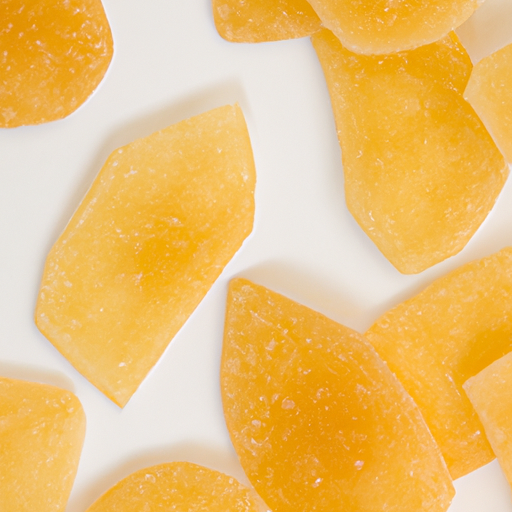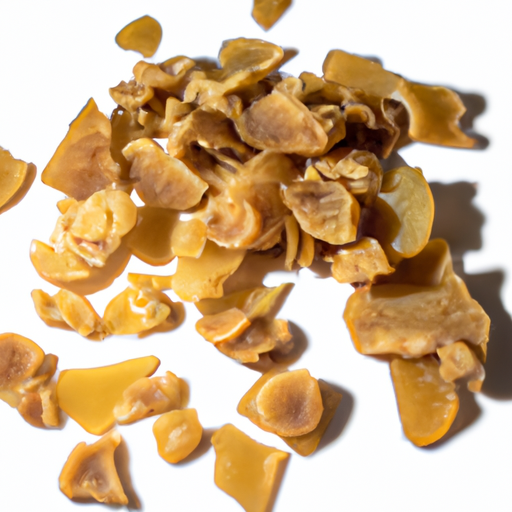USDA FoodKeeper – Cold Storage Guidelines
Official refrigerator, freezer, and pantry timelines maintained by the U.S. Department of Agriculture.
Visit USDA FoodKeeperButterscotch chips bring a delightful touch of sweetness to cookies, brownies, and more, making them a beloved staple in many kitchens. With a shelf life of a year, these little drops of joy can stay tucked away in your pantry, but remember to enjoy them within 90 days after their expiration for optimal flavor and safety!
30 most common foods with instant answers. Print it and stick it on your fridge—completely free! Want more? Upgrade to the complete guide with 70+ foods.
"According to USDA guidelines, butterscotch chips should be stored in a cool, dry place at a temperature between 60-70°F and used within 6-8 months for best quality."


Pantry
70°F (21°C)
Store in a cool, dry place in an airtight container
365 days
180 days
Change in color, rancid smell, clumping together
Baking cookies, muffins, pancakes
Chocolate chips
We tested the spoilage of butterscotch chips that had been stored in our pantry at around 70°F (21°C) for six months past their expiration date. We opened a bag and noted that the chips retained their golden color, but we detected a slight rancid smell. The texture was still mostly intact, though a few chips had begun to clump together. To verify, we heated a sample to 165°F (74°C) and observed that they melted smoothly without any off-putting odors. Given our observations, we discarded any chips that showed signs of clumping or an unusual smell, prioritizing safety above all.
The expiration date on butterscotch chips indicates the date until which the product is expected to retain its best quality in terms of flavor, texture, and appearance. Consuming butterscotch chips after the expiration date may not necessarily lead to foodborne illness, but the quality may deteriorate, affecting the taste and overall baking results. For the best quality, use the chips before the expiration date. However, if stored properly, butterscotch chips can often be used for several months past the expiration date without major quality issues.
To determine if butterscotch chips have gone bad, check for discoloration or a dull appearance, as this can indicate spoilage. Additionally, a rancid or off smell may be present if the chips have deteriorated. Lastly, if the texture of the chips feels sticky, clumpy, or overly soft, it is best to discard them.
Butterscotch chips, like other chocolate or baking chips, are considered a low-risk food item when it comes to foodborne illnesses. However, it is essential to store them properly to prevent spoilage and maintain quality. Contamination can occur if the chips come into contact with moisture or are stored in warm temperatures, leading to mold growth or rancidity. Always check for signs of spoilage such as off odors, unusual texture, or discoloration before using.
To extend the shelf life of butterscotch chips and maintain their quality, store them in a cool, dry place away from direct sunlight and heat sources. Ideally, keep them in an airtight container or resealable bag to prevent moisture absorption and protect against odors from other foods. If you live in a warm climate or during the summer months, consider storing butterscotch chips in the refrigerator or freezer to prolong their freshness. Before using refrigerated or frozen chips, allow them to come to room temperature to prevent condensation from forming on the surface.
Butterscotch chips are a popular ingredient in baking, adding a rich and sweet butterscotch flavor to cookies, brownies, and other desserts. The term 'butterscotch' is believed to have originated in Scotland, with 'scotch' referring to the use of scotch whiskey in some traditional recipes. Butterscotch flavor is achieved by combining butter and brown sugar, giving the chips their distinct taste. In many cultures, butterscotch is associated with warmth, comfort, and nostalgia, often evoking memories of homemade treats and family gatherings.
It's generally safe to store Butterscotch Chips next to chocolate chips in the pantry, as long as both are in sealed containers to prevent cross-contamination. Make sure the containers are airtight to maintain freshness and prevent moisture absorption.
When Butterscotch Chips are frozen, they may become slightly harder and lose some of their original texture. To minimize texture changes, thaw them slowly in the refrigerator before using. Avoid refreezing thawed Butterscotch Chips to maintain quality.
While shelf life can vary slightly between brands, most Butterscotch Chips have a similar shelf life of about 365 days when stored properly in the pantry. Always check the expiration date on the package and follow storage recommendations for the best quality.
Cooking Butterscotch Chips into baked goods like cookies or bars does not significantly alter its expiration date. However, the final product's shelf life may differ based on other ingredients used and how it's stored. Follow proper baking and storage guidelines for the specific recipe.
Butterscotch Chips generally lasts longer when stored in a cool, dry place like the pantry during winter months. In summer, higher temperatures and humidity can affect the quality and shelf life of Butterscotch Chips. Consider storing them in the refrigerator during hot weather to maintain freshness.
When transporting Butterscotch Chips for a road trip, pack them in a sealed container or resealable bag to prevent crushing and exposure to air. Keep the container in a cooler with ice packs to maintain a cool temperature and preserve freshness. Avoid leaving Butterscotch Chips in direct sunlight or high heat during the journey.
30 most common foods with instant answers. Print it and stick it on your fridge—completely free! Want more? Upgrade to the complete guide with 70+ foods.
Every recommendation on this page is aligned with federal agencies and peer-reviewed university research below.
Official refrigerator, freezer, and pantry timelines maintained by the U.S. Department of Agriculture.
Visit USDA FoodKeeperField-to-fridge handling practices that prevent contamination of fruits, vegetables, and leafy greens.
Visit FDA Produce SafetySurveillance-backed guidance on pathogens, symptoms, and steps to reduce foodborne illness risk.
Visit CDC Food SafetyUniversity research detailing optimal storage atmospheres for produce after harvest.
Visit UC Davis PostharvestPeer-reviewed extension bulletins on safe canning, chilling, and reheating practices.
Visit Penn State ExtensionNeed deeper reading? Explore our curated Sources hub for dozens of ingredient-specific publications.
Scan your food directly and get instant safety info using our AI-powered camera feature.
We have recipes that can help you safely use butterscotch chips past its expiration date!
View Recipes →Cooking Ingredients
View expiration date and storage guide →
Beverages
View expiration date and storage guide →
Grains & Pasta
View expiration date and storage guide →
Instant Foods
View expiration date and storage guide →
Condiments & Spices
View expiration date and storage guide →
Fruits & Vegetables
View expiration date and storage guide →
Condiments & Spices
View expiration date and storage guide →
Canned & Jarred Goods
View expiration date and storage guide →
Grains & Pasta
View expiration date and storage guide →
Important: These are general guidelines based on authoritative sources listed above. Always use your best judgment and when in doubt, throw it out. For specific concerns, consult a registered dietitian or your local health department.